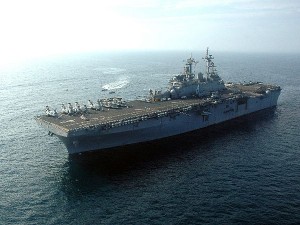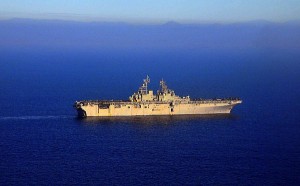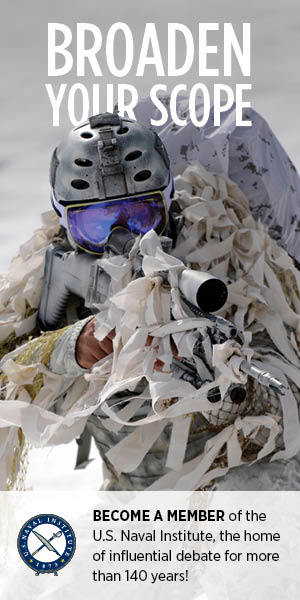President Barack Obama’s National Security Advisor, GEN James Jones Jr., USMC (Ret.) reportedly made the difficult decision last month to call off a massive hostage rescue effort that was to have been undertaken by German counter-terrorism forces and launched from the USS Boxer, a U.S. Navy amphibious assault ship that was also involved in the April rescue of Captain Richard Phillips of the Maersk-Alabama.
 According to the German weekly magazine Der Spigel, the United States was asked by its close NATO ally to assist with logistics for the German assault force, said to involve over 200 members of GSG-9, German law enforcement’s most elite hostage rescue and counter-terrorism team. The plan was to retake the German freighter Hansa Stavanger and free the 24 crew members seized by Somali pirates in early April.
According to the German weekly magazine Der Spigel, the United States was asked by its close NATO ally to assist with logistics for the German assault force, said to involve over 200 members of GSG-9, German law enforcement’s most elite hostage rescue and counter-terrorism team. The plan was to retake the German freighter Hansa Stavanger and free the 24 crew members seized by Somali pirates in early April.
The German rescue forces were already in place aboard the American ship when Jones called off the mission. Deeming the planned assault far too risky and a possible “suicide mission,” Jones apparently felt the risk outweighed the benefits of the rescue attempt. German federal police leaders who oversee GSG-9 (a unit roughly equivalent to the FBI’s Hostage Rescue Team) are likely relieved that the Marine General turned White House advisor vetoed the rescue plans, as they too were said to have been concerned that the bureaucratically convoluted and tactically complex hostage rescue effort might result in a “bloodbath.” German Interior Ministry State Secretary August Hanning also noted that the pirates seemed well prepared to repel any attack.
As I’ve noted in Combat Fleets of the World, 15th edition, a ship with the size and capabilities of the USS Boxer is uniquely suited to help with the type of operation for which Germany reportedly requested assistance. Displacing over 40,000 tons fully loaded, the USS Boxer can carry more than two dozen helicopters or fixed wing AV-8B Harrier aircraft and well over a thousand troops. All U.S. Navy ships of this type also have extensive hospital facilities that include multiple operating rooms and the capability to treat hundreds of patients.
 If these reports are confirmed, the German attempt to free its hostages with the help of U.S. military assets, including the USS Boxer, demonstrates the high level of international cooperation required to control the spread of global piracy at both the tactical and strategic levels. Though this particular operation seems to have been called off for good reason, the high level of international and interagency collaboration should, nonetheless, be applauded and must continue. No nation has a monopoly on the military, economic or political tools that are required to end the piracy problem. It will only be though international teamwork that the world can hope to find a real solution. As Admiral James Stavridis and Captain Mark Hagerott explained in their recent Naval War College Review article, “… challenges are transnational and nontraditional, the joint commander of today needs to be able to integrate the efforts of a wider and more disparate set of organizations than ever before …”
If these reports are confirmed, the German attempt to free its hostages with the help of U.S. military assets, including the USS Boxer, demonstrates the high level of international cooperation required to control the spread of global piracy at both the tactical and strategic levels. Though this particular operation seems to have been called off for good reason, the high level of international and interagency collaboration should, nonetheless, be applauded and must continue. No nation has a monopoly on the military, economic or political tools that are required to end the piracy problem. It will only be though international teamwork that the world can hope to find a real solution. As Admiral James Stavridis and Captain Mark Hagerott explained in their recent Naval War College Review article, “… challenges are transnational and nontraditional, the joint commander of today needs to be able to integrate the efforts of a wider and more disparate set of organizations than ever before …”
I expect that the fight against Somali piracy is only now beginning to take shape. If this planned hostage rescue operation provides us with any indication, the navies and special operations forces of the world, already stretched thin by wars in Iraq and Afghanistan, should not expect much rest in the years to come.
Eric Wertheim
Naval Institute Guide to Combat Fleets of the World
Photo credits: US Navy

